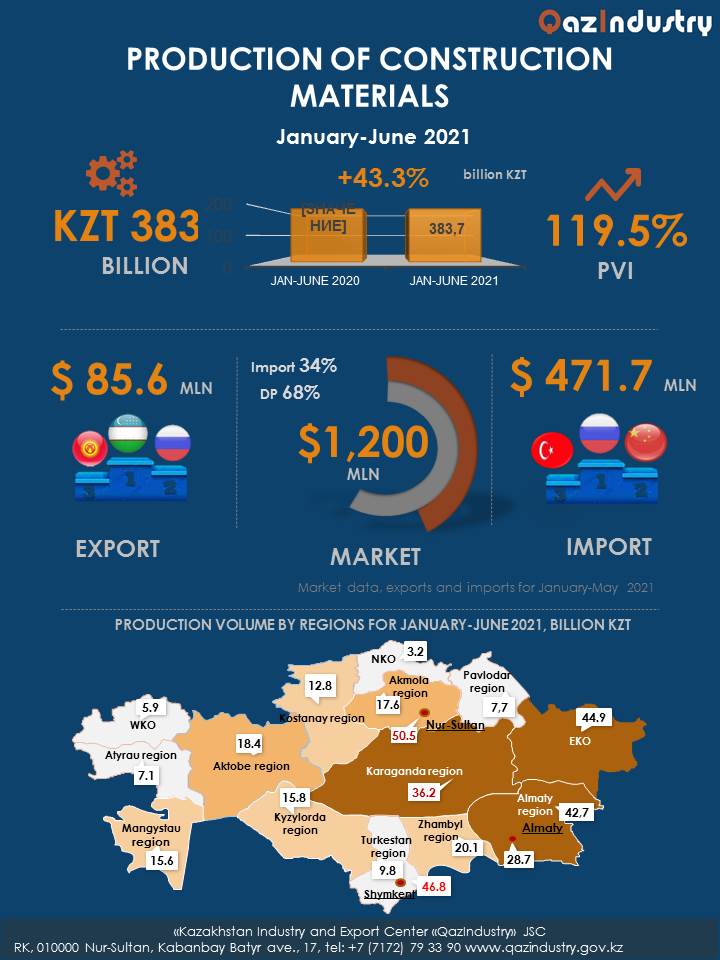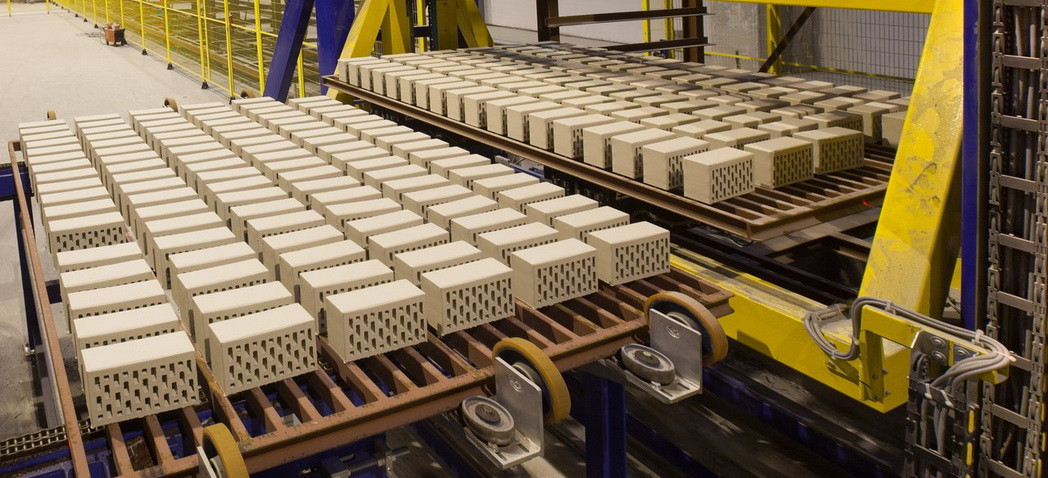The volume of production of construction materials of the Republic of Kazakhstan in January-June 2021 amounted to KZT 383.7 billion, which in nominal terms is 43.3% higher than the same period in 2020 (KZT 267.8 billion).
The physical volume index of production in January-June 2021 amounted to 119.5%. The growth in physical terms is observed for the following products: refractory products (+96.9%); non-refractory ceramic bricks (+2.3 times); portland cement (+24.7); slag wool, silicate mineral wool and similar mineral wool (+65.6%); construction solutions (+26.3%); commercial concrete (+4.8 %); concrete products for construction purposes (+10.2%); prefabricated concrete structures (+7%) , etc.
The decrease in the volume of output of goods in physical terms was shown only by: ceramic facing bricks (-12.9%), and slabs, tiles and similar products made of cement and concrete (-8.1%).
Exports of construction materials products in January-May 2021 increased by 33% compared to the same period in 2020 and amounted to US$ 85.6 million. In physical terms, the volume of exports increased by 27% to 921 thousand tons, while for the same period last year it was at the level of 725 thousand tons. The main top export countries are Uzbekistan, Russia and Kyrgyzstan.
The import of construction materials to the domestic market in January-May 2021 amounted to US 471.7 million, showing an increase of 20% compared to the same period in 2020. In physical terms, the volume of goods amounted to 1,446 thousand tons, an increase of 40% compared to January-May 2020 (1,027 thousand tons). The main top importing countries are Russia, China and Turkey.
In January-May 2021, the volume of the construction materials market in the Republic of Kazakhstan amounted to US $ 1,200 million, where the share of DP accounts for 68%, the share of imported products – 34%.
The largest volumes of production in value terms for the period under review fall on the cities of Nur-Sultan (with the region's share of 13% in total production) and Shymkent (12%), as well as East Kazakhstan (12%) and Almaty regions (11%).






